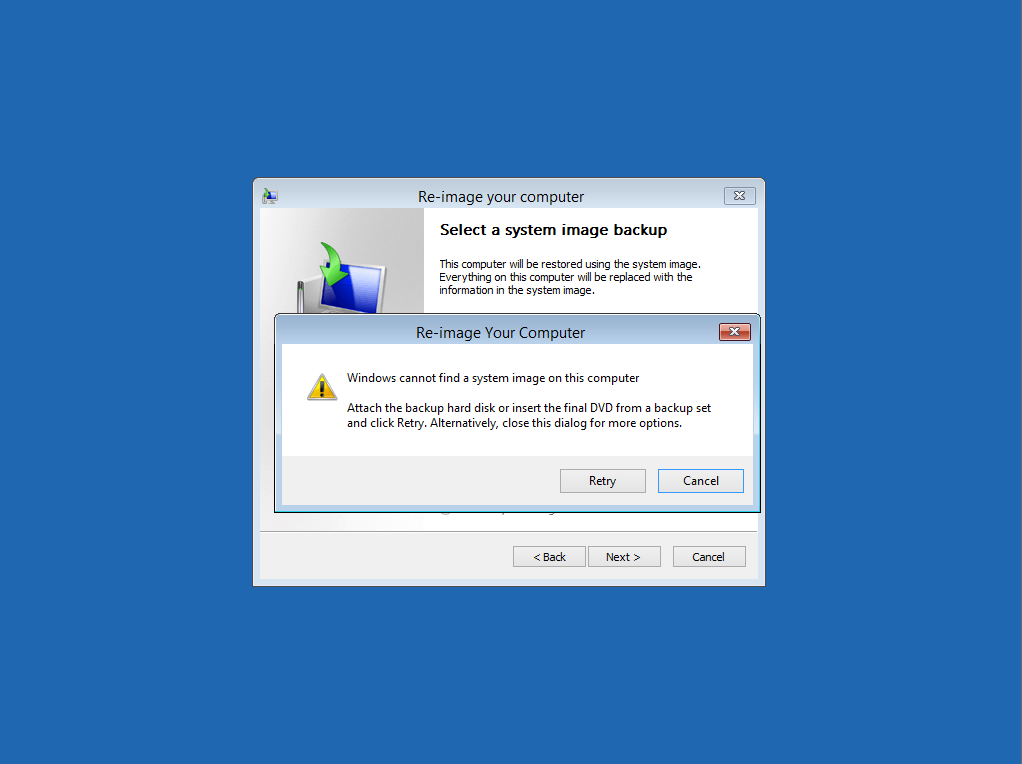Traveling abroad can be a fantastic experience, but unforeseen tech issues can quickly dampen the joy. This guide provides a comprehensive approach to common problems, from electrical outlet discrepancies to connectivity challenges and device compatibility snags. By understanding potential pitfalls and preparing in advance, you can confidently navigate any tech hurdle while experiencing the best your destination has to offer.
This guide dives deep into the practical steps for addressing various tech issues encountered during international travel. It will equip you with the knowledge and tools to overcome these problems and maintain a smooth, tech-savvy journey abroad.
Troubleshooting Electrical Issues
Traveling internationally often necessitates adapting to different electrical systems. Understanding these variations is crucial for preventing damage to your devices and ensuring smooth operation. Incorrectly using foreign electrical outlets can lead to malfunctions or even potential hazards. This section details the intricacies of global electrical systems and provides practical guidance for safe and effective troubleshooting.
Global Electrical Outlet Types
Different countries utilize various electrical outlet types, each with unique configurations. These variations stem from historical and regional factors. Recognizing these differences is vital for avoiding compatibility issues. Understanding the outlet types in different regions allows travelers to select appropriate adapters for their devices. This knowledge is essential for preventing damage to electronics and ensuring safe use.
Determining Device Compatibility
Identifying the correct outlet type for a specific device is paramount. Carefully examine the device’s power cord or charger. Look for markings indicating the required voltage and plug type. Checking the device’s documentation is a reliable way to verify the necessary electrical specifications. Matching the device’s requirements to the destination’s outlet type prevents damage and ensures safe operation.
Universal Adapters and Their Benefits
Universal adapters offer a convenient solution for accommodating different outlet types. They feature multiple plug configurations, allowing them to fit various electrical outlets worldwide. These adapters often come with built-in safety features, such as voltage regulation, to protect connected devices. The versatility of universal adapters significantly simplifies the process of connecting devices to foreign electrical systems.
Safe Use of Voltage Converters
Voltage converters are essential when the destination’s electrical voltage differs significantly from your device’s operating voltage. These devices safely transform the incoming voltage to a level suitable for your electronics. Always ensure the converter’s rating matches the device’s requirements. Never overload the converter, as this can lead to overheating and potential damage. Proper use of voltage converters ensures safe operation of devices in foreign locations.
Outlet Type, Country, Device Compatibility, and Adapter Recommendation
| Outlet Type | Country | Device Compatibility | Adapter Recommendation |
|---|---|---|---|
| Type A (North America) | USA, Canada | Most devices with Type A plugs | No adapter needed if the device is designed for Type A plugs |
| Type C (Europe) | France, Germany, Italy, Spain, and other European countries | Devices with Type C plugs | No adapter needed if the device is designed for Type C plugs |
| Type G (United Kingdom) | United Kingdom | Devices with Type G plugs | No adapter needed if the device is designed for Type G plugs |
| Type I (Japan) | Japan | Devices with Type I plugs | No adapter needed if the device is designed for Type I plugs |
| Multiple Type Outlets | Various countries | Devices with various plug types | Universal adapter |
Addressing Connectivity Problems

Staying connected to the internet is crucial for many tasks, from business communication to personal entertainment, especially when traveling abroad. Difficulties accessing reliable Wi-Fi can significantly impact productivity and daily routines. This section explores the challenges of connectivity abroad and provides solutions to maintain a strong online presence.
Challenges of Accessing Wi-Fi Abroad
Accessing reliable Wi-Fi in various locations can be challenging. Public Wi-Fi networks often have limited bandwidth or security vulnerabilities, potentially exposing personal data to risks. Furthermore, the quality and availability of Wi-Fi vary significantly across countries and regions, making it unpredictable and unreliable for some travelers. The technical infrastructure supporting Wi-Fi may be less developed or less robust in certain areas, leading to slow speeds or intermittent connections.
Options for Staying Connected
Maintaining connectivity abroad requires proactive measures. Purchasing a local SIM card offers a reliable and often affordable way to access data services. Portable Wi-Fi hotspots provide a readily available and potentially faster connection option. Utilizing a Virtual Private Network (VPN) can enhance security and bypass geographical restrictions on certain websites or services.
Importance of Data Roaming and Management
Data roaming allows for mobile internet access while traveling internationally. Proper management of data roaming is essential to avoid exorbitant charges. Understanding roaming costs and limits before departure is crucial for budget planning. Pre-paid data plans with clear usage limits can help avoid unexpected expenses.
Comparison of Data Plans and Costs
Data plans vary significantly in terms of data allowances and pricing across different countries. Data plans often include varying monthly quotas and data speeds. Comparing pricing structures from different providers is necessary to find the most cost-effective option. Factors such as the average data usage of the traveler, the duration of the trip, and the cost of data in the destination country should all be considered.
For example, in some countries, mobile data may be significantly more expensive than in others.
Comparison of Connection Methods
Different methods of staying connected have their own advantages and disadvantages. A table outlining the pros and cons of purchasing local SIM cards, using portable Wi-Fi hotspots, and utilizing VPNs can help travelers choose the best approach for their needs.
| Connection Method | Pros | Cons |
|---|---|---|
| Local SIM Card | Generally affordable, reliable in most areas, offers local access to services like messaging apps and social media. | Requires a compatible device and local language support. May involve activation or registration processes. |
| Portable Wi-Fi Hotspot | Offers reliable, high-speed internet access in many locations, suitable for multiple devices. | Can be more expensive than a local SIM card, requires a separate device, and potential for battery drain. |
| VPN | Ensures enhanced security and privacy, useful for accessing geo-restricted content. | May reduce internet speeds, and not a primary means of internet access. May require a subscription fee. |
Resolving Device Compatibility Issues
Traveling abroad often presents challenges related to device compatibility. Different operating systems and software versions can lead to unexpected errors and limitations when using your devices with local systems. Understanding these potential problems and how to mitigate them is crucial for a smooth experience.Device compatibility issues are common when traveling abroad. Software and operating system differences between your home country and your destination can cause various problems.
By proactively addressing potential compatibility issues, you can minimize disruptions to your travel plans.
Understanding Operating System and Software Version Differences
Different operating systems (like Windows, macOS, iOS, and Android) and their various software versions often have different functionalities and features. Applications might not be compatible across systems, resulting in errors or limitations. Specific apps or services may not be available or may function differently based on the operating system. Software updates may not be readily available in certain regions, creating compatibility problems.
Updating Device Software Before Travel
Regularly updating your device software before your trip is a proactive approach to resolving potential compatibility issues. Software updates often include bug fixes and improvements that address compatibility problems. This proactive measure can significantly enhance your travel experience by preventing or minimizing unforeseen difficulties.
- Check for available updates on your device before departure.
- Download and install any pending updates to ensure compatibility with local systems.
- Consider downloading any necessary software or applications from reputable sources.
Troubleshooting Software Errors and Conflicts
Software errors and conflicts can arise from incompatibility between your device software and local systems. These errors can range from minor glitches to significant problems preventing access to certain features or services. Understanding these potential errors is essential for effective troubleshooting.
- Restart your device to resolve minor software glitches.
- Check for any error messages and research solutions online.
- Use device troubleshooting tools if available to identify and address the root cause of errors.
Solving Compatibility Problems Between Devices and Local Systems
Compatibility problems between your devices and local systems can manifest in various ways, such as limited access to applications or services. These issues are often related to software or hardware differences.
- Use VPN services for applications that are region-locked.
- Ensure necessary drivers for peripherals are updated.
- Check the compatibility of your devices with local networks and internet providers.
Common Operating System Compatibility Issues and Solutions
The table below highlights common compatibility issues and their corresponding solutions:
| Operating System Compatibility Issue | Possible Solution |
|---|---|
| Incompatible applications | Download compatible versions or use alternatives |
| Limited access to services | Utilize VPN services or explore alternative access methods |
| Software updates unavailable | Download software updates before departure |
| Device drivers not compatible | Update device drivers from manufacturer’s website or reliable sources |
Utilizing Local Resources for Support

Troubleshooting technology abroad can be significantly smoother when leveraging local resources. Understanding how to contact local support, find relevant professionals, and access helpful online communities can save valuable time and potentially prevent costly errors. This section provides a comprehensive guide to effectively utilizing local support systems.
Importance of Local Emergency Numbers
Knowing local emergency numbers for technical assistance is crucial. These numbers are often associated with specific providers or government agencies, providing a direct line for immediate support. Having these numbers readily available can be particularly helpful during critical situations, such as power outages affecting your device or critical communication issues.
Locating Local Tech Support Professionals or Stores
Finding local tech support professionals or stores is often a matter of conducting thorough research. Online search engines, local business directories, and recommendations from hotel staff or fellow travelers can prove invaluable. Consider factors such as the type of support needed (hardware repair, software assistance), the specific technology involved, and the geographical location when searching. Some businesses may specialize in particular brands or technologies.
For instance, if you need assistance with a specific smartphone model, looking for authorized repair centers or retailers specializing in that model would be prudent.
Accessing Online Forums and Communities
Online forums and communities dedicated to specific technologies or regions can provide invaluable support. These online platforms often host experienced users who can offer troubleshooting advice and solutions. For example, dedicated forums for a specific brand of laptop, or general forums for electronics in a particular country, can offer helpful insight. Moreover, these forums may offer insights into common problems specific to the region, such as regional software compatibility issues or local repair practices.
Pros and Cons of International Tech Support
While international tech support can sometimes provide a solution, it often comes with drawbacks. Pros might include immediate access to global resources and troubleshooting steps, but cons might include communication barriers, potentially higher costs, and less familiarity with local conditions. Consider the specific issue and the resources available locally before resorting to international support. For example, a simple software issue might be more efficiently handled by a local support provider, whereas a complex hardware problem might require specialized international expertise.
Step-by-Step Guide for Contacting Local Support Services
- Identify the specific issue or problem.
- Research local tech support professionals or stores. Use online search engines and local directories.
- Note down relevant details, including the make, model, and any error messages.
- Contact the local support professional or store, either by phone or in person.
- Explain the problem clearly and concisely, providing all necessary details.
- Follow the support professional’s instructions carefully and document any solutions provided.
- If the issue persists, seek further assistance from additional local resources.
Preparing for Tech Issues Before Travel

Traveling abroad can be an exciting adventure, but unexpected technology problems can quickly dampen the experience. Proactive preparation is key to minimizing disruptions and ensuring a smooth trip. This section focuses on strategies for anticipating and addressing potential tech issues before you even leave home.
Packing for Troubleshooting
Thorough preparation minimizes the likelihood of encountering significant technical difficulties during your travels. A well-stocked toolkit of essential items can prove invaluable in resolving minor issues and avoiding costly repairs.
- International Adapter/Converter: Ensure you have the correct adapter for the destination country’s electrical outlets. Incorrect adapters can damage your devices or prevent them from charging.
- Universal Power Strip: A power strip with multiple outlets and surge protection can safeguard your electronics from power fluctuations, especially in areas with unreliable electricity.
- Extra Batteries/Chargers: Pack extra batteries for your devices, especially for portable electronics. Carry a sufficient number of chargers for various devices, including a backup charger for your phone and laptop.
- Spare Memory Cards/External Hard Drives: Storing critical data on backup media is essential. This allows for quick recovery if a primary storage device malfunctions or is damaged.
- Connectivity Troubleshooting Kit: Pack a few essential items for troubleshooting connectivity problems, such as a portable Wi-Fi hotspot, a spare SIM card, and a travel-sized Ethernet cable.
- Repair Kit (if applicable): For devices prone to physical damage, such as smartphones, include a basic repair kit with replacement parts (if possible).
Data Backup Strategies
Data loss can be devastating, especially during travel. Creating comprehensive backup plans before departure is crucial to mitigate this risk.
- Cloud Storage: Utilize cloud storage services to automatically back up important files. Ensure these services are accessible in your destination location.
- External Hard Drives: Copy crucial data to external hard drives for a physical backup that isn’t reliant on internet access.
- Offline Backup Software: Employ offline backup software to regularly back up data to an external hard drive, ensuring a reliable backup method even without internet connectivity.
- Email Backups: For important documents, consider emailing them to yourself as a secondary backup option. This is helpful for smaller files or when internet access is available.
Local Contacts for Support
Building local contacts or identifying local tech support can significantly ease troubleshooting efforts when issues arise. Knowing who to call in case of a problem can be crucial for a stress-free trip.
- Local Tech Professionals: Research local electronics repair shops or tech support providers in your destination. Contact them in advance to understand their services and costs.
- Hotel Staff/Tour Operators: Hotel staff and tour operators can sometimes provide valuable local contacts or support in case of device issues.
- Local Friends/Family: If you have friends or family in the destination, ask them for their recommendations regarding local tech support or repair shops.
- Contact Information: Compile a list of phone numbers and addresses for these local contacts and store them securely on your phone and in a physical copy.
Step-by-Step Data Backup Guide
Backing up your data before departure is a critical step in preventing data loss. Follow these steps to create a comprehensive backup plan.
- Identify Crucial Data: Determine which files, photos, and documents are essential for your trip. This will help you prioritize your backup.
- Choose Backup Method(s): Select the backup methods that best suit your needs and the resources available. Consider a combination of cloud storage and external hard drives.
- Initiate Backup Process: Execute the chosen backup procedures to ensure all essential data is copied to the selected storage media. Monitor the progress of the backup process.
- Verify Backup: After the backup process is complete, verify that the backup data is accessible and intact. This is important to ensure the backup is working correctly.
- Maintain Backup Regularly: Establish a schedule to regularly update your backups. This will ensure you have the most recent data available.
Illustrative Examples of Tech Issues

Traveling abroad often presents unique technological challenges. Understanding these potential issues and how to address them proactively can significantly enhance your trip. This section provides practical examples of common tech problems encountered by travelers and how to effectively resolve them.
Electrical Outlet Issues
Electrical outlets vary significantly across countries. Using the wrong adapter or plug can lead to damage to your devices or even cause safety hazards.
- Scenario: A traveler from the United States arrives in Japan and tries to charge their laptop. The US plug does not fit the Japanese outlet.
- Resolution: Purchase a suitable adapter that converts the US plug to the Japanese standard. This adapter should be readily available at most international airports and electronics stores.
- Important Consideration: Always verify the voltage compatibility of the adapter and your device to prevent damage. Some adapters may be designed for specific voltages, ensuring that your devices will operate properly.
Connectivity Problems
Reliable internet access is crucial for many travelers. Difficulties with Wi-Fi or cellular data can disrupt communication and access to necessary information.
- Scenario: A tourist in a remote village in Southeast Asia experiences spotty Wi-Fi connection. The hotel’s Wi-Fi network is slow and unreliable, hindering their ability to access online maps or make calls.
- Resolution: Explore alternative connectivity options, such as purchasing a local SIM card with data. Look for reliable Wi-Fi hotspots in cafes or public areas. Use your phone’s mobile data, if available, to access maps and other necessary services.
- Important Consideration: Research the local carrier’s roaming rates and data plans in advance to avoid unexpected charges. Checking the hotel’s Wi-Fi specifications prior to your stay can help ensure a reliable connection.
Device Compatibility Issues
Different regions might have different operating system standards or technical specifications.
- Scenario: A traveler using an iPhone in India notices that some apps they use regularly are not compatible with the local network.
- Resolution: Confirm compatibility of the app with the local operating system and region. The app’s developer website should have this information. If necessary, try a VPN to see if that resolves the compatibility issue.
- Important Consideration: Download the app’s information from a reliable app store to ensure you are using a verified version. Consult the device’s documentation for specific compatibility details.
Utilizing Local Resources for Tech Support
Local resources can provide valuable assistance when troubleshooting tech problems.
- Scenario: A traveler in a foreign country encounters a problem with their camera. They are unfamiliar with the local language and are unsure how to proceed.
- Resolution: Locate local electronics stores or repair shops. Ask for recommendations from hotel staff or other travelers. Use translation apps to communicate with the repair technicians if needed.
- Important Consideration: Ensure the local technician has the necessary tools and expertise for repairing the device. Verify the store’s reputation for quality service through online reviews or word-of-mouth recommendations.
Problems with Local Service Providers
Dealing with local service providers can present unique challenges.
- Scenario: A traveler has trouble with their local mobile service provider. They cannot receive calls or send text messages.
- Resolution: Visit the service provider’s office or contact their customer service line, if available. Document the problem and any troubleshooting steps you have taken. If possible, have a translator or local guide assist you with communication.
- Important Consideration: Be prepared to provide necessary identification documents and proof of service to the service provider. Keep a record of all communication with the service provider to resolve the issue efficiently.
Advanced Troubleshooting Strategies
Advanced troubleshooting involves tackling complex technical issues that go beyond basic fixes. This often requires a systematic approach, utilizing various diagnostic tools and methods to pinpoint the root cause of the problem. Understanding the underlying mechanisms of the issue is crucial for effective resolution, particularly when dealing with corrupted files, software malfunctions, or data loss. By employing advanced techniques, users can confidently address intricate problems and recover valuable data.
Corrupted File Recovery
Corrupted files can arise from various sources, including faulty downloads, power outages, or operating system glitches. Understanding the potential causes allows for targeted recovery strategies. Specialized software is often necessary for recovering data from severely damaged files. These tools use algorithms to analyze the remaining data and reconstruct the original file structure.
Software Malfunction Resolution
Software malfunctions can range from minor glitches to complete system crashes. A systematic approach to diagnosis involves checking for updates, verifying system resources, and examining logs for error messages. Identifying the specific error codes or messages is crucial for effective resolution. Sometimes, reinstalling the software or restoring from a backup is necessary to resolve the issue.
Lost Data Retrieval
Data loss can be devastating, but recovery is often possible. The first step involves immediately ceasing any further use of the device to prevent further damage. Next, utilizing data recovery software, often available for purchase or download, can aid in locating and retrieving lost files. In some cases, professional data recovery services may be necessary for complex situations.
Device Restoration Techniques
Restoring devices to a previous, working state can often resolve complex issues. Creating regular backups of critical data is crucial for disaster recovery. Restoration involves using the backup files to revert the device to a previous state, effectively eliminating the problem. Understanding the specifics of the device’s operating system is crucial to perform the restoration accurately.
Troubleshooting Tool Usage
Specialized tools and software provide advanced capabilities for troubleshooting. Disk utilities allow users to analyze disk partitions and identify potential issues. System information tools provide detailed insights into hardware and software configurations, enabling users to pinpoint resource bottlenecks or conflicts. These tools aid in the diagnostic process and provide detailed information, allowing for accurate problem solving.
| Problem | Diagnosis | Solution |
|---|---|---|
| Corrupted document file | Examine file integrity, check for error messages, use file recovery software | Employ specialized file recovery software, try different file formats, restore from backup |
| Software freezes | Check for updates, identify resource usage, examine system logs | Restart the software, reinstall the software, identify and resolve resource conflicts |
| Lost data from external drive | Verify drive connectivity, use data recovery software, assess drive health | Utilize data recovery software, try different connection methods, consider professional data recovery services |
| Operating system malfunctions | Check for error messages, examine system logs, identify potential hardware issues | Restore the operating system from backup, reinstall the operating system, diagnose and fix hardware conflicts |
Last Word

In conclusion, this comprehensive guide equips travelers with the necessary skills and knowledge to tackle common tech problems encountered during international travel. From pre-trip preparations to advanced troubleshooting strategies, the steps Artikeld provide a robust framework for seamless and enjoyable travel experiences. Remember, preparation and a proactive approach are key to mitigating potential tech issues and savoring every moment of your adventure.